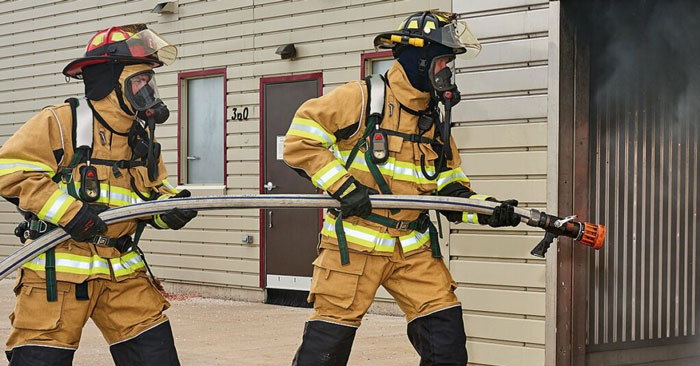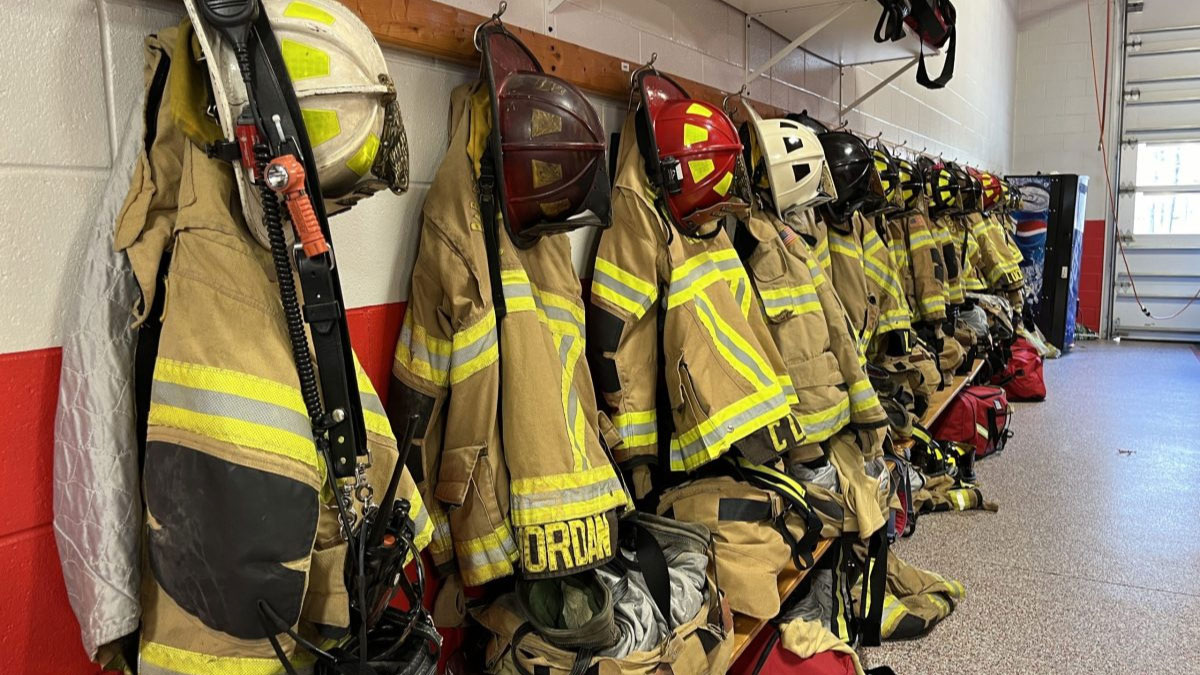How Heavy is Firefighter Gear? Expert Guide
Firefighter gear represents a crucial balance between protection and mobility, with the total weight significantly impacting performance and safety. Modern firefighting equipment combines multiple layers of specialized materials and essential tools, creating a substantial load that firefighters must manage during emergency operations.
Basic Components and Their Weight
Turnout Gear Essentials
The standard firefighter protective ensemble, known as turnout gear or bunker gear, typically weighs between 45 to 50 pounds[3]. This basic setup includes:
Core Protection Elements:
- Helmet with protective shield
- Fire-resistant hood
- Turnout coat with thermal protection
- Protective pants
- Steel-toed boots
- Heavy-duty gloves
The turnout coat alone can weigh up to 20 pounds, featuring multiple layers of fire-resistant materials like Nomex, Aramid, or Kevlar[10].
Breathing Apparatus
The Self-Contained Breathing Apparatus (SCBA) adds significant weight:
- Complete SCBA system: approximately 30 pounds[5]
- Air tank with 30-45 minutes of air supply
- Regulator and face mask
- Harness system

Additional Equipment Weight
Standard Tools and Devices
Firefighters often carry extra equipment that can increase their total load to 75-85 pounds[5]:
- Thermal imaging cameras
- Two-way radios
- Flashlights
- Basic hand tools
- Personal alert safety system (PASS) devices
Specialized Equipment
Depending on the emergency situation, additional tools may be required:
- Axes and forcible entry tools
- Rescue ropes
- Medical equipment
- Specialized rescue gear
Material Composition and Weight Distribution
Protective Layers
Modern firefighting gear consists of three essential layers, each contributing to the overall weight:
Outer Shell
The exterior layer weighs approximately 7-8 pounds and provides:
- Initial fire resistance
- Protection against cuts and abrasions
- Water-resistant properties
Moisture Barrier
This middle layer adds 4-5 pounds and offers:
- Protection from water penetration
- Chemical resistance
- Breathability features
Thermal Liner
The innermost layer contributes 3-4 pounds while providing:
- Insulation against extreme temperatures
- Comfort for the wearer
- Moisture-wicking properties
Impact on Performance and Health
Physical Demands
The substantial weight of firefighting gear creates significant physical challenges:
- Increased energy expenditure during operations
- Higher cardiovascular stress
- Reduced mobility and flexibility
- Extended recovery time needed
Heat Stress Considerations
Heavy protective gear affects thermal regulation:
- Body temperature can rise rapidly
- Sweating efficiency is reduced
- Risk of heat exhaustion increases
- Limited working time in high-temperature environments
Ergonomic Factors
Weight distribution plays a crucial role in:
- Balance and stability during operations
- Risk of musculoskeletal injuries
- Long-term physical health impacts
- Overall operational effectiveness
Weight Variations by Department and Region
Department Standards
Different fire departments maintain varying equipment requirements:
- Urban departments often carry heavier gear due to complex rescue scenarios
- Rural departments might opt for lighter configurations
- Specialized units may require additional equipment weight
International Differences
Equipment weight standards vary globally:
- European standards typically result in lighter gear
- North American gear tends to be heavier due to additional safety features
- Australian firefighting equipment is optimized for extreme heat conditions
Modern Innovations in Weight Reduction
Advanced Materials
Recent technological developments have led to lighter alternatives:
- Carbon fiber composites for structural components
- Ultra-lightweight thermal materials
- Advanced polymer blends for protection
- Nano-materials for enhanced durability
Smart Design Solutions
Manufacturers are implementing weight-saving features:
- Modular equipment systems
- Integrated tool carriers
- Streamlined SCBA designs
- Ergonomic weight distribution systems
Training and Adaptation
Physical Conditioning
Firefighters undergo specific training to manage heavy gear:
- Strength training programs
- Endurance building exercises
- Balance and mobility work
- Heat acclimation training
Equipment Familiarization
Regular practice with full gear is essential for:
- Developing muscle memory
- Improving movement efficiency
- Understanding personal limitations
- Optimizing performance under load
Health and Safety Considerations
Long-term Physical Impact
Extended use of heavy firefighting gear can lead to:
- Lower back strain and injuries
- Joint stress, particularly in knees and ankles
- Shoulder and neck complications
- Increased risk of cardiovascular issues
Safety Protocols
Departments implement specific measures to address weight-related concerns:
- Regular gear weight assessments
- Rotation of heavy equipment duties
- Mandatory rest periods
- Health monitoring systems
Maintenance and Weight Management
Equipment Care
Proper maintenance affects gear weight:
- Regular cleaning can add temporary weight
- Water absorption increases overall load
- Proper drying techniques maintain optimal weight
- Equipment inspection for weight-adding damage
Storage Solutions
Appropriate storage helps manage equipment condition:
- Climate-controlled storage areas
- Vertical hanging systems
- Proper ventilation
- Regular gear rotation
Frequently Asked Questions
Common Inquiries About Firefighter Gear Weight
Q: How much does a complete set of firefighter gear weigh?
A: A complete set typically weighs between 45-75 pounds, depending on included equipment and department requirements.
Q: Does wet gear weigh more?
A: Yes, water-saturated gear can add 5-10 pounds of additional weight during operations.
Q: How long can firefighters wear full gear?
A: Working time in full gear varies based on conditions, typically 20-45 minutes before requiring rest and air tank replacement.
Q: What’s the heaviest piece of firefighting equipment?
A: The SCBA system is usually the heaviest single component, weighing approximately 30 pounds.
Comparative Analysis and Future Trends
Weight Comparison Table
| Equipment Type | Standard Weight (lbs) | Modern Lightweight (lbs) | Weight Reduction (%) |
|---|---|---|---|
| Turnout Coat | 20-25 | 15-18 | 25% |
| SCBA System | 30-35 | 25-28 | 20% |
| Boots | 8-10 | 6-7 | 30% |
| Helmet | 5-6 | 3-4 | 35% |
Future Developments
Emerging Technologies
- Smart fabrics with enhanced protection
- Lighter composite materials
- Powered exoskeletons for weight support
- Integrated communication systems
Key Takeaways
The weight of firefighter gear represents a critical balance between protection and mobility. Modern firefighting equipment typically weighs between 45-75 pounds, with variations based on department requirements and specific missions. While technological advances continue to reduce weight while maintaining protection, the substantial load remains a significant consideration in firefighter training, health, and operational effectiveness.
Citations:
[1] https://uknowledge.uky.edu/cgi/viewcontent.cgi?article=1047&context=khp_etds
[2] https://phenixcityal.us/faq-items/how-much-does-a-firefighters-gear-weigh/
[3] https://firefighternow.com/how-much-does-a-firefighters-gear-weigh/
[4] https://pmc.ncbi.nlm.nih.gov/articles/PMC4620539/
[5] https://sepatrading.com/blog/weight-of-equipment-carried-by-firefighters
[6] http://keithsandersraleighnc.com/how-much-does-firefighter-gear-weigh/
[7] https://townofclaytonnc.org/FAQ.aspx?QID=86
[8] https://patch.com/connecticut/thehaddams-killingworth/bp–whats-it-weigh-firefighter-gear-piece-by-piece
[9] https://pmc.ncbi.nlm.nih.gov/articles/PMC8397967/
[10] https://www2.montgomerycountymd.gov/content/frs-safe/kids/firefighter_gear/firefighter_gear.pdf
[11] https://www.nist.gov/news-events/news/2024/01/wear-and-tear-may-cause-firefighter-gear-release-more-forever-chemicals
[12] https://www.mdpi.com/2071-1050/14/12/7040







